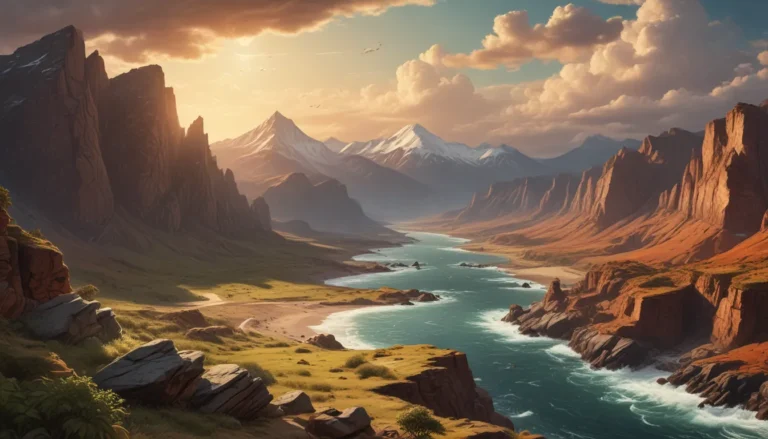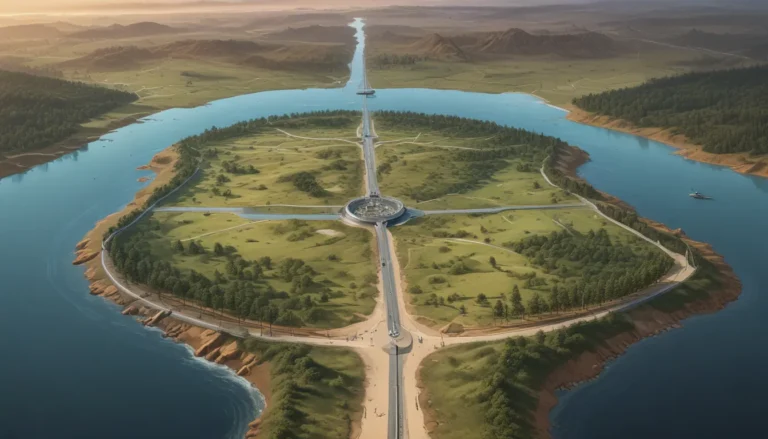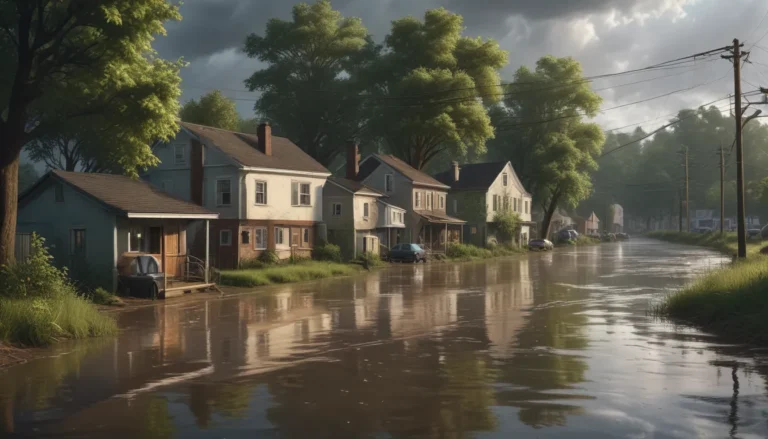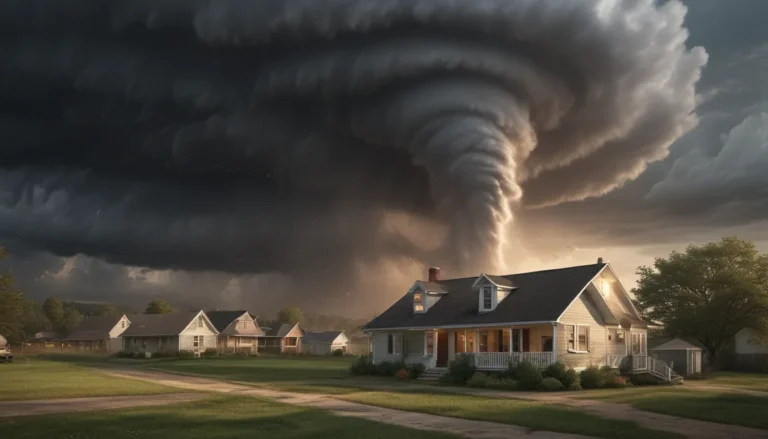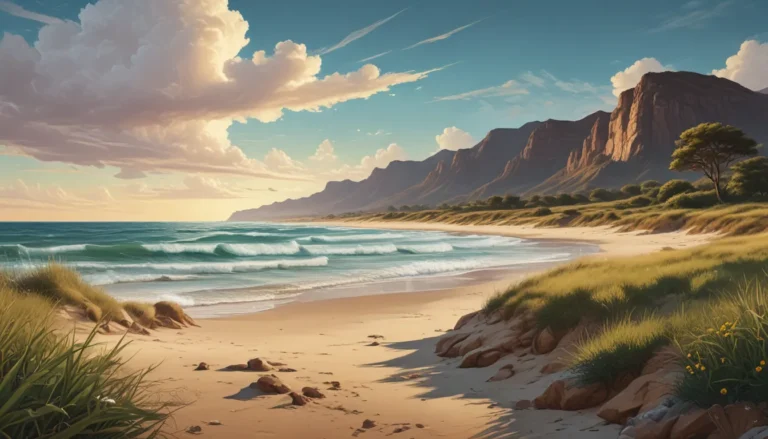A Note About Images: The images used in our articles are for illustration purposes only and may not exactly match the content. They are meant to engage readers, but the text should be relied upon for accurate information.
Welcome to the world of uplifted coastlines, where the Earth’s dynamic forces have shaped breathtaking landscapes that tell stories of ancient civilizations, evolving ecosystems, and the ever-changing relationship between land and sea. In this article, we will delve into the awe-inspiring realm of uplifted coastlines and uncover nine unbelievable facts that will leave you in awe of the power and beauty of our planet.
Unveiling the Mysteries of Uplifted Coastlines
Uplifted coastlines are more than just picturesque seascapes. These regions are like time machines, offering a glimpse into Earth’s history through ancient marine fossils, majestic cliffs, and unique landforms. Let’s embark on a journey through the wonders of uplifted coastlines and explore the fascinating facts that make these coastal areas truly exceptional.
The Great Barrier Reef: A Tale of Transformation
Did you know that the iconic Great Barrier Reef in Australia was once a towering mountain range? Over millions of years, tectonic activity and natural forces reshaped these mountains into the stunning coral reef we know today. This transformation is a testament to the enduring power of geological processes in shaping our planet’s landscapes.
Unraveling Earth’s History Through Fossils
The fossils found on uplifted coastlines are windows into Earth’s past, offering valuable insights into evolution, climate change, and ancient civilizations. These ancient marine life preserved in rocks act as time capsules, allowing scientists to piece together the puzzle of our planet’s history. Each fossil tells a story of a bygone era, enriching our understanding of the Earth’s intricate past.
The Majesty of Plate Tectonics
Plate tectonics, the driving force behind uplifted coastlines, shapes our world by creating coastal features such as cliffs, terraces, and raised beaches. The collision and movement of Earth’s tectonic plates lead to the uplifting of land, resulting in the majestic landscapes that define uplifted coastlines. It is a powerful reminder of the dynamic forces that shape our planet.
A Glimpse Into the Past: Ancient Shorelines
Standing on a cliffside overlooking the sea, it is hard to imagine that millions of years ago, that spot was a tranquil shoreline. Uplifted coastlines often reveal ancient shorelines that are now high above sea level, showcasing the ever-changing boundary between land and sea. These elevated remnants offer a visual record of Earth’s geological history, captivating visitors with their stories of the past.
Norway’s Fjords: A Testament to Geological Forces
Norway’s striking fjords, carved by ancient glaciers, bear witness to the power of uplifted coastlines. The land uplifted over time, coupled with glacial erosion, resulted in the creation of these deep valleys that stand as a testament to Earth’s geological processes. The beauty of Norway’s fjords is a testament to the enduring impact of uplifted coastlines on shaping our planet’s landscapes.
Understanding Coastal Erosion and Sediment Transport
Uplifted coastlines play a vital role in coastal erosion and sediment transport, shaping the coastline’s form and influencing wave patterns. The uplifted land acts as a barrier, altering the movement of waves and currents along the coast. This interplay between uplifted coastlines and erosion is essential for coastal management and preserving vulnerable coastal areas.
Diverse Ecosystems: Nature’s Masterpiece
The unique habitats created by uplifted coastlines support a rich diversity of plant and animal species. As uplifted coastlines expose a variety of rock layers and sediments, they provide researchers with a unique opportunity to study biodiversity, adaptation, and ecosystem dynamics. These ecosystems are a testament to the resilience and adaptability of life in the face of geological changes.
Traces of Ancient Human Settlements
Uplifted coastlines have the potential to unveil the remnants of ancient human civilizations that once thrived near the coast. Archaeologists and historians study these coastal relics to gain insights into past human societies and their interactions with the environment. These traces of ancient settlements serve as a poignant reminder of the enduring link between humans and the natural world.
A Constantly Changing Planet
Above all, uplifted coastlines remind us of the dynamic nature of our planet and the awe-inspiring forces that have shaped it over millions of years. They serve as a living record of Earth’s evolution, showcasing the ever-changing landscapes that have been uplifted and reshaped over time. Uplifted coastlines stand as a testament to the enduring power and beauty of our planet’s geological wonders.
Exploring the Depths of Uplifted Coastlines
In conclusion, uplifted coastlines are geological treasures that offer a window into Earth’s history and the ongoing processes that shape our world. From ancient marine fossils to majestic fjords, these coastal marvels provide a wealth of information about our planet’s dynamic past. As we continue to study uplifted coastlines, we deepen our understanding of Earth’s geological processes and their implications for fields such as geology, archaeology, and climate change research. Next time you find yourself gazing at a rugged coastline, remember that beneath its surface lies a rich tapestry of stories waiting to be discovered.
FAQs: Unveiling the Secrets of Uplifted Coastlines
-
What causes coastlines to be uplifted?
Coastlines can be uplifted by tectonic forces, such as the movement of tectonic plates or continental collisions, pushing the land upwards and altering the coastline’s elevation. -
How do scientists study uplifted coastlines?
Scientists study uplifted coastlines by analyzing geological features like beach ridges, terraces, and fossils preserved in rocks. Techniques such as radiometric dating help determine the age of these formations. -
Are uplifted coastlines only found near active tectonic zones?
Uplifted coastlines can be found in various locations worldwide, both near active tectonic zones and in regions where geological uplift has occurred in the past. These coastal areas offer valuable insights into Earth’s crustal history and dynamics. -
Can uplifted coastlines impact local ecosystems?
Uplifted coastlines create diverse habitats that support a wide range of plant and animal species, promoting biodiversity and ecological resilience. The changes in elevation and environmental conditions contribute to the development of unique ecosystems along uplifted coastlines. -
Are uplifted coastlines susceptible to erosion?
Like any coastline, uplifted coastlines are prone to erosion from factors such as wave action, weathering, and sea-level fluctuations. The rate of erosion may vary depending on the local geology and environmental conditions, highlighting the dynamic nature of coastal landscapes.
Uplifted coastlines are a captivating blend of geological wonders and natural beauty, offering a glimpse into Earth’s history and the intricate processes that shape our planet. By immersing ourselves in the stories told by uplifted coastlines, we deepen our connection to the dynamic forces that have shaped our world. Explore the wonders of uplifted coastlines and embark on a journey through time as you witness the enduring power and beauty of Earth’s geological marvels.

